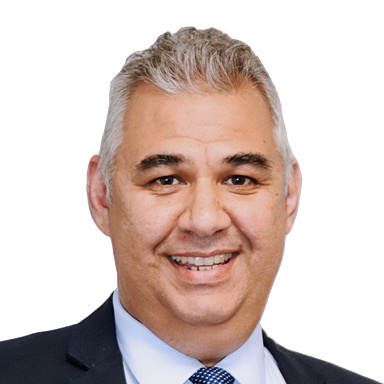Losing your vision doesn’t have to be inevitable – even as you age or have a condition that’s known to lead to vision loss.
Dr Meldrick Booysen is an ophthalmologist (a specialist in the diagnosis and treatment of eye disorders) at Mediclinic Gariep and Mediclinic Kimberley. He explains four common eye conditions and your treatment options.
Glaucoma
What it is: Glaucoma is characterised by damage to the optic nerve, which blocks the transmission of nerve impulses to the brain, causing loss of vision. The problem is its effects are so slow, you may not realise anything is wrong until it’s too late. Untreated or undiagnosed glaucoma will eventually lead to blindness. In fact, glaucoma is one of the leading causes of irreversible blindness worldwide.
Symptoms: These vary according to age. Babies born with congenital glaucoma usually have excessive tearing and enlarged and often hazy corneas that make their eyes look enlarged. Children and elderly patients can have two types of glaucoma:
- Primary open angle glaucoma patients are often asymptomatic, although they may experience reduced vision, headaches and changes to their field of vision.
- Closed angle glaucoma patients experience a rapid decrease in vision, and usually experience redness and eye pain that radiates from the eyes to the back of the head, often accompanied by nausea and a hazy cornea.
Treatment: Your ophthalmologist may prescribe medication, based on your level of risk, or recommend a procedure. Argon laser trabeculoplasty and selective laser trabeculoplasty are in-room laser procedures performed by an ophthalmologist. The objective of both procedures is to drain fluid out of your eye, reducing pressure. There are also surgical interventions that can reduce eye pressure.
Cataracts
What it is: Cataracts occur when the lens inside the eye becomes cloudy, effectively blocking the transmission of light into the eye. The lens becomes cloudy as a result of changes in its protein structure, similar to the colour change of egg whites, changing from clear to white when heated. Cataracts can occur at any age – even babies can get them. But they’re most common in:
- The elderly
- Patients with inflammation in the eyes
- Patients who have had trauma
- Patients with metabolic disorders such as diabetes mellitus.
They can also be caused by medication such as oral steroids. Cataracts are the leading cause of reversible blindness worldwide.
Symptoms: You’ll gradually lose both your near and distant vision, and this ultimately leads to blindness if the cataracts aren’t treated timeously. Fortunately, this blindness is reversible. Note that if you get a cataract in one eye, you will inevitably get a cataract in the other eye too.
Treatment: A surgical procedure called phacoemulsification is performed in an operating theatre. It uses high-frequency ultrasound to break the cataract up so that it can be removed. Then, a lens made of a special type of plastic is inserted into the eye, customised to the patient’s needs. Once the cataract has been surgically removed, it’s gone for good.
Diabetes-related retinopathy
What it is: Diabetes mellitus can affect the body in many ways. When patients with diabetes develop eye complications, ophthalmologists refer to this as diabetic retinopathy. Left undetected, it will lead to irreversible blindness.
What can I expect?: Most patients are asymptomatic in the early stages. Later, you may find your vision deteriorating – but by then, the disease may already be advanced. People with either type 1 or type 2 diabetes should visit an ophthalmologist regularly.
Treatment: A team approach is important, comprising a GP; dietician; physician (specialist who focuses on non-surgical treatment); endocrinologist (treats disorders of the endocrine glands and hormones); nephrologist (kidney specialist); and ophthalmologist. The ophthalmologist can tailor treatment – laser, injections of specialised medications, such as anti-vaso-endothelial growth factors (anti-VEGFs), and implantable drug delivery systems. However, all treatment is still focused on the diabetic control of the patient.
Age-related macular degeneration (AMD)
What it is: This is a degeneration of the inner layers of the eye (retina, retinal pigment epithelium and choroid) that only occurs in the elderly. Left untreated, it will lead to irreversible loss of central vision – the most important part of your sight, which allows you to see details, read and drive, among other things. Not everyone will develop AMD; genetic predisposition plays a big role, but lifestyle factors also contribute. You can lower your risk by:
- Not smoking
- Limiting time in the sun and using sun protection
- Eating plenty of green leafy vegetables, such as spinach
- Doing regular moderate exercise.
Symptoms: Blurred vision, loss of central vision and metamorphopsia (distorted vision) in patients generally older than 65 years are the hallmarks of the disease.
Treatment: An ophthalmologist will use intra-ocular injectable anti-VEGFs and VEGF drugs.
See an ophthalmologist as a matter of urgency if you experience:
- Double vision
- Halos around lights,
- Wavy lines,
- Blurry faces,
- Watery vision
- Sudden spots
- Pain in your eyes
- Physical changes to your eyes
Visit www.mediclinic.co.za to find an ophthalmologist at your nearest Mediclinic.
Further publications on the topic
Doctors 1


